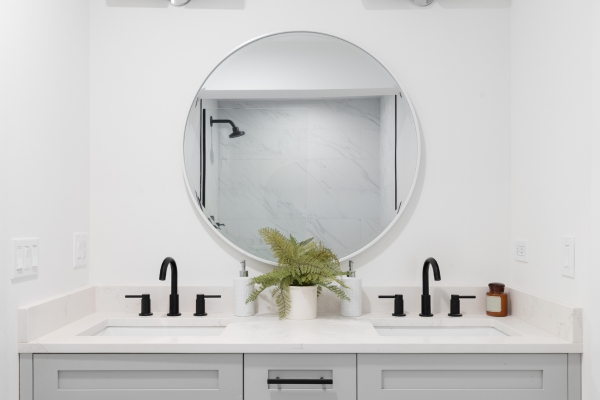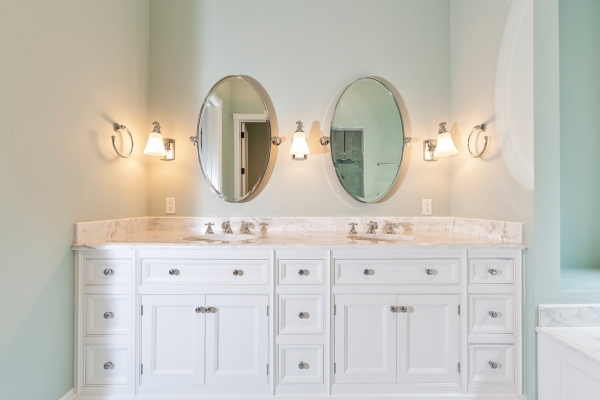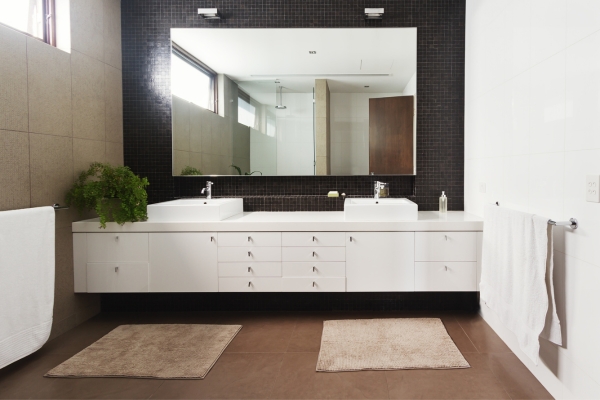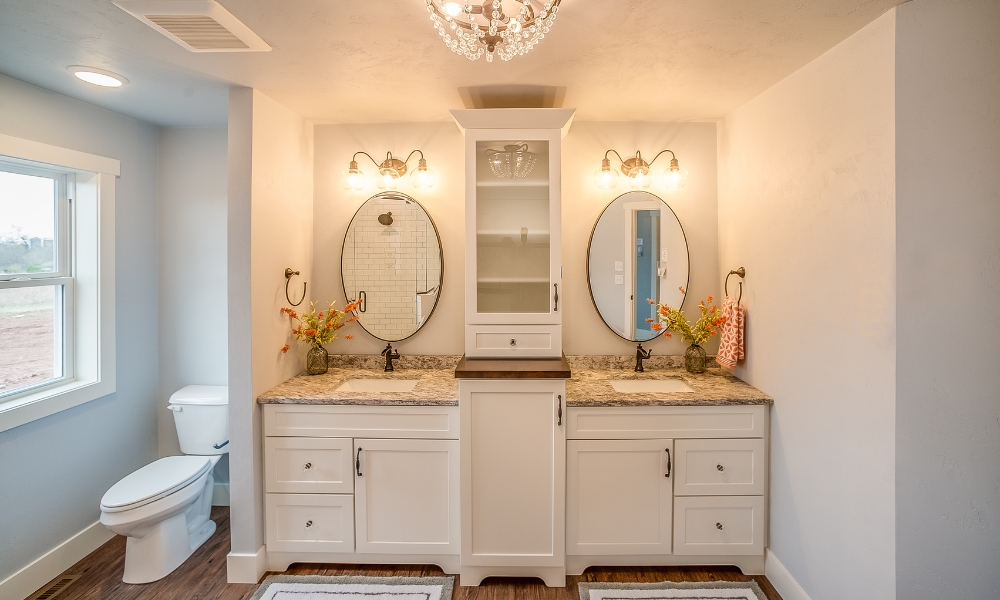A bathroom vanity unit serves as an essential fixture in modern bathrooms, blending functionality with aesthetic appeal seamlessly. This versatile piece of furniture typically comprises a sink or basin set into a countertop, often accompanied by storage cabinets or drawers underneath. Its primary purpose is to provide a convenient space for daily grooming rituals while also enhancing the overall decor of the bathroom. Available in various styles, sizes, and materials, It caters to diverse preferences and spatial requirements, making it a cornerstone of bathroom design and organization.
What Is the Standard Size for a Bathroom Vanity Unit?
The standard size for It can vary depending on the available space and individual preferences. Generally, widths range from 24 inches to 72 inches, accommodating single or double sinks accordingly. Height typically falls between 30 inches to 36 inches, catering to ergonomic considerations for comfortable use. Depth can vary as well, often averaging around 20 inches to 24 inches, ensuring ample space for the sink and countertop while allowing for sufficient legroom underneath. These standardized dimensions ensure compatibility with various bathroom layouts and help in optimizing both functionality and visual appeal.
Importance of a Bathroom Vanity Unit
The importance of It extends beyond mere functionality to encompass several practical and aesthetic benefits. Firstly, it serves as a focal point in bathroom decor, contributing to the overall style and ambiance of the space. By incorporating different materials, finishes, and designs, a vanity unit can complement or contrast with other elements in the bathroom, enhancing its visual appeal. Moreover, the storage capabilities of a vanity unit help in organizing bathroom essentials, promoting a clean and tidy environment. This not only improves accessibility but also reduces clutter, making it easier to maintain cleanliness and hygiene. Additionally, a well-chosen vanity unit can add value to a home, appealing to potential buyers or tenants looking for both practicality and style in a bathroom setting. Thus, investing in a quality It ensures both functional efficiency and aesthetic enhancement, making it a worthwhile addition to any modern bathroom.
Types Of Bathroom Vanity Units
- Freestanding Vanity Units
- Wall-Mounted Vanity Units
- Corner Vanity Units
Materials Used In Bathroom Vanity Units

1. Wood
Wood is a classic and popular choice for It due to its natural beauty and versatility. Common types of wood used include oak, maple, walnut, and teak, each offering distinct grain patterns and colors. Wood adds warmth and a timeless appeal to bathroom spaces, and it can be finished in various stains or paints to complement different interior styles. However, it requires proper sealing or finishing to protect it from moisture damage in humid bathroom environments.
2. Metal
Metal bathroom vanity units, often constructed from stainless steel, brass, or chrome, provide a sleek and modern aesthetic. It is highly durable and resistant to moisture, making it suitable for humid bathroom conditions. It offers a minimalist and industrial look, which can be enhanced with different finishes such as brushed or polished surfaces. Metal vanity units are easy to clean and maintain, adding a contemporary touch to the bathroom decor.
3. Glass
Glass vanity units are admired for their transparency and ability to create an illusion of space in smaller bathrooms. They typically feature tempered glass countertops or sinks, which are sturdy and resistant to scratches. Glass vanity units often incorporate other materials like metal or wood for the frame and support, offering a blend of elegance and functionality. They reflect light well, contributing to a brighter and more open bathroom atmosphere.
4. Composite Materials
Composite materials such as engineered wood, MDF (Medium-Density Fiberboard), or laminate are popular choices for It due to their affordability, durability, and resistance to moisture. These materials are engineered to mimic the look of natural wood or stone while offering better resistance to water damage and warping. They come in a variety of finishes and colors, providing flexibility in design and style options. Composite materials are also easy to maintain, making them a practical choice for busy households.
Design Styles For Bathroom Vanity Units

1. Traditional
Traditional It evoke a timeless and elegant look, often characterized by ornate details, intricate moldings, and rich wood finishes like cherry or mahogany. They typically feature raised panel doors, decorative hardware, and sometimes include intricate carvings or embellishments. Traditional vanities often have a more substantial presence, adding a sense of luxury and sophistication to the bathroom. They are ideal for classic interior designs and homes with a more formal aesthetic.
2. Contemporary
Contemporary bathroom vanity units embody a sleek and modern design ethos, characterized by clean lines, minimalist silhouettes, and a focus on functionality. They often feature smooth surfaces, simple hardware, and may incorporate materials like glass, metal, or composite materials with glossy finishes. Contemporary vanities prioritize simplicity and efficiency, offering ample storage without sacrificing style. They are popular in urban settings and homes with a modern, minimalist aesthetic.
3. Rustic
Rustic bathroom vanity units embrace a charming and weathered appearance, inspired by natural elements and a sense of coziness. They often feature distressed wood finishes, reclaimed materials, and rugged textures that highlight imperfections for a more organic look. Rustic vanities may incorporate features like barn-style doors, hammered metal sinks, or wrought iron hardware, evoking a sense of countryside charm or cabin retreats. They are perfect for homes with a farmhouse or rustic-inspired décor.
4. Minimalist
It emphasises simplicity and functionality, with a clean and uncluttered design aesthetic. They often feature sleek lines, monochromatic color schemes, and minimalist hardware or integrated handles. Materials like engineered wood, laminate, or even metal are common choices for minimalist vanities, focusing on essential storage solutions and a streamlined appearance. Minimalist vanities are ideal for contemporary interiors or small bathrooms where space efficiency is paramount.
Key Components Of A Bathroom Vanity Unit Include

1 Sink
The sink is a fundamental component of a It, providing a basin for washing hands, brushing teeth, and other daily grooming tasks. Sinks come in various materials such as porcelain, ceramic, stainless steel, or glass, each offering different aesthetic and functional benefits. They are typically mounted into the countertop and may feature single or double basins depending on the vanity unit’s design.
2. Countertop
The countertop serves as both a functional surface and a design element in a bathroom vanity unit. It provides space around the sink for placing toiletries, hand soap dispensers, or decorative items. Countertops are available in materials like granite, marble, quartz, laminate, or solid surface materials, offering durability and aesthetic versatility. The choice of countertop material can significantly influence the vanity unit’s overall look and maintenance requirements.
3. Cabinetry
Cabinetry in a vanity unit provides essential storage space for organizing towels, toiletries, cleaning supplies, and other bathroom essentials. Cabinets may feature doors, drawers, or a combination of both, offering accessibility and organization options tailored to personal preferences. Materials for cabinetry range from solid wood, engineered wood, to composite materials, each offering different levels of durability and style.
4. Mirror
A mirror is a crucial component of a vanity unit, facilitating daily grooming routines such as shaving, applying makeup, or styling hair. Mirrors may be integrated directly into the vanity unit, mounted on the wall above the countertop, or come with built-in lighting for enhanced functionality. The size and style of the mirror can complement the overall design theme of the bathroom, adding depth and visual interest to the space.
Conclusion
A bathroom vanity unit integrates multiple components to create a functional and aesthetically pleasing focal point in the bathroom. From the sink and countertop for daily use to the cabinetry for storage and the mirror for grooming, each element plays a crucial role in enhancing both the practicality and style of the bathroom environment. Choosing the right combination of these components allows homeowners to personalize their bathroom spaces according to their preferences, ensuring functionality meets design seamlessly.


